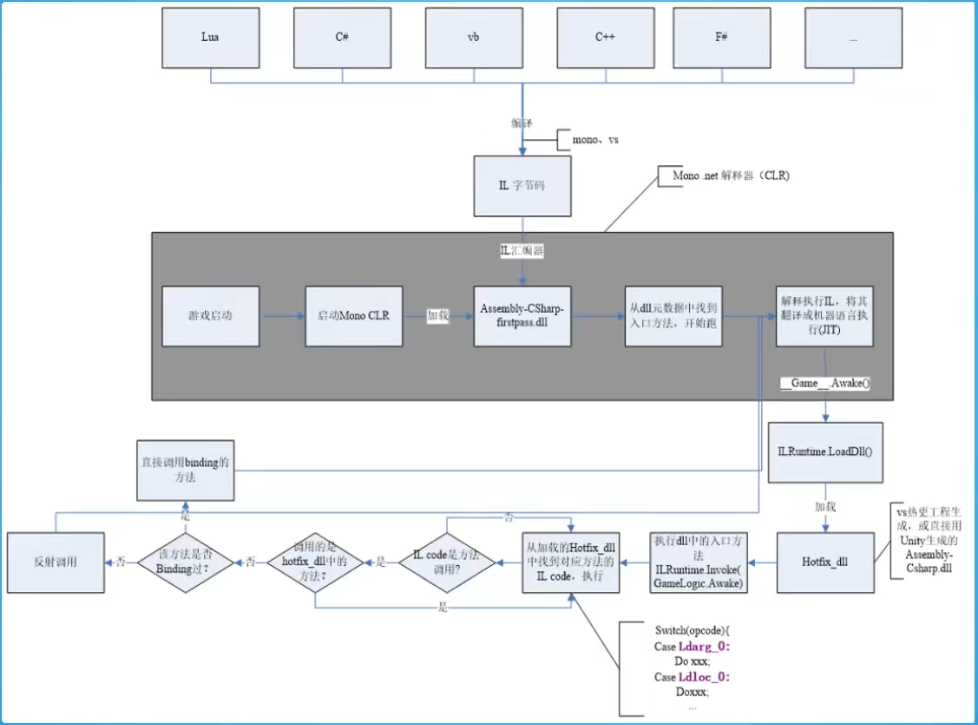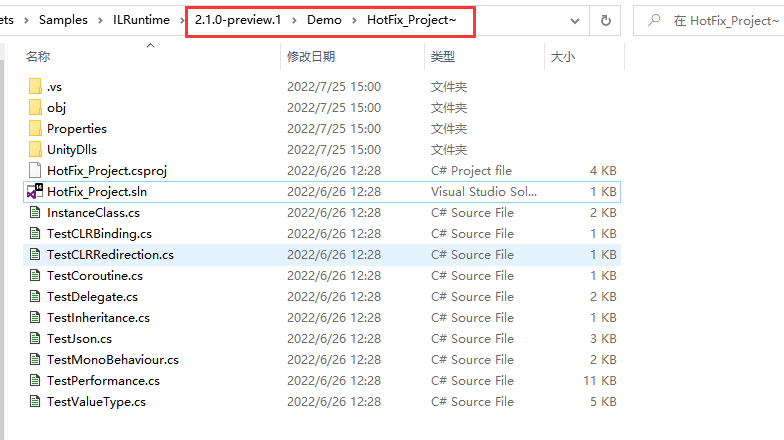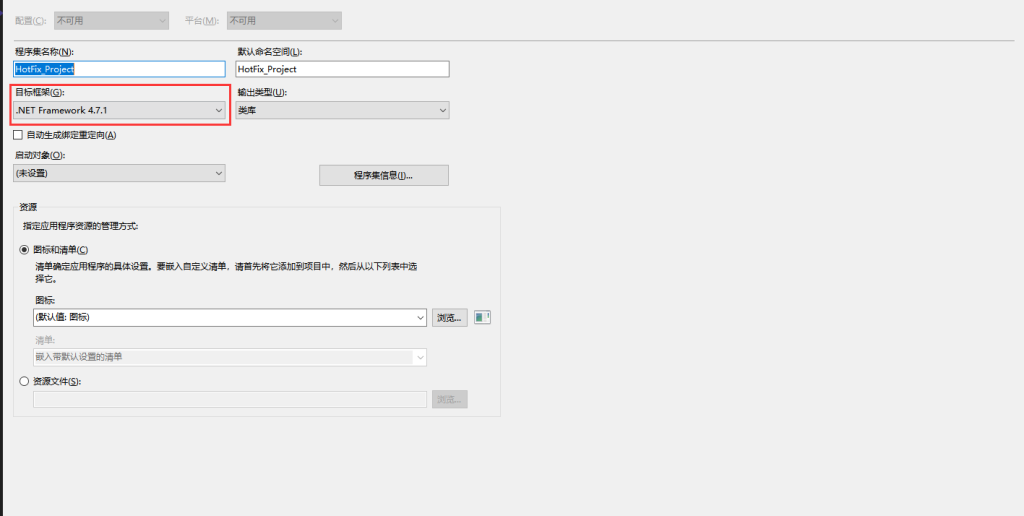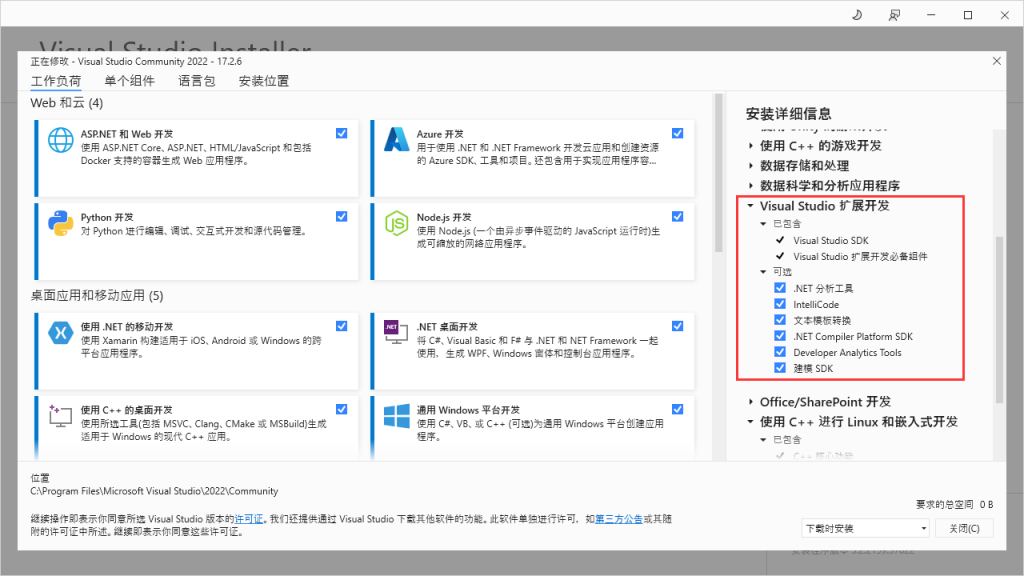- 项目/教程地址:传送门
- IL热更优点:
1、无缝访问C#工程的现成代码,无需额外抽象脚本API
2、直接使用VS2015进行开发,ILRuntime的解译引擎支持.Net 4.6编译的DLL
3、执行效率是L#的10-20倍|
4、选择性的CLR绑定使跨域调用更快速,绑定后跨域调用的性能能达到slua的2倍左右(从脚本调用GameObject之类的接口)
5、支持跨域继承
6、完整的泛型支持
7、拥有Visual Studio的调试插件,可以实现真机源码级调试。支持Visual Studio 2015 Update3 以及Visual Studio 2017和Visual Studio 2019
8、最新的2.0版引入的寄存器模式将数学运算性能进行了大幅优化 - 工程使用U3D核心模板,版本号:2020.3.27f1(Personal)
- ILRuntime版本:2.1.0-preview
- 原个人博客网址:ILRuntime热更新 - Sugar的博客
- 2020/7/29补充:ILRuntime框架允许直接使用Unity的组件,具体可以直接在B站直接搜索ILRuntime,找到视频时长为2小时左右的那个教程(B站基本上都是那一个教程),那个教程有详细框架搭建和指引,算是目前免费的里面比较好的教程视频了。在ILRuntime热更框架中你可以直接使用Unity组件,直接用Find等方式找到GameObject然后编写代码逻辑。付费课程我看Siki学院有个全套的,但太贵了我就没买(<-暗示)
我建议ILRuntime的官方手册作者罚抄《CLR via C#》100遍,看看人家怎么写教程的。?
前置知识
- CLR:Common Language Runtime,可由多重编程语言使用的“运行时(即Runtime)”。
- lib,dll,pdb文件:传送门。dll动态链接库,pdb程序数据二进制文件,pdb文件保存着调试和项
- 目状态信息,主要作用是调试。
- ref、out:传送门
- GC(generational garbage collector):基于代的垃圾回收器
- appdomain:CLR COM服务器初始化时会创建一个AppDomain。AppDomain是一组程序集的逻
- 辑容器。CLR初始化时创建的第一个AppDomain称为“默认AppDomain”,这个默认的AppDomain
- 只有在Windows进程终止时才会被销毁。除了默认 AppDomain,正在使用非托管COM接口方法
- 或托管类型方法的宿主还可要求CLR创建额外的 AppDomain。AppDomain是为了提供隔离而设计
- 的。
- 反射:编译时对一个类型一无所知的情况下,如何在运行时发现类型的信息、创建类型的实例以及
- 访问类型的成员。反射造成编译时无法保证类型安全性。同时反射有较大的开销。What's GC.Alloc?
- GC.Alloc means that during the run time your code (or something in the API) allocates this
- much of the managed memory.
- This can cause problems later (that's why it has the row in the profiler), because when the
- Garbage Collector runs, it tends to slow down or even hang your game.
- ILRuntime原理图表

手册部分
环境
- Windows10
- Unity:2020.3.27f1(Personal)
- ILRuntime版本:2.1.0-preview
- IDE:Visual Studio 2022
- JDK:Java SE 8(8u202 and earlier)
- SDK Tools:24.4.1
- 模拟器:雷电模拟器9.0.5
基础
原理
- ILRuntime借助Mono.Cecil库来读取DLL的PE信息,以及当中类型的所有信息,最终得到方法的IL汇编码,然后通过内置的IL解译执行虚拟机来执行DLL中的代码。 ILRuntime目标是读取热更新的dll,编译成IL,然后使用自己的JIT Compiler来执行热更dll中的代码,达到热更的目的。
- ILRuntime自己实现了一些类型和栈的操作,以此减少装箱拆箱的次数。
优势
- 无缝访问C#工程的现成代码,无需额外抽象脚本API
- 直接使用VS2015进行开发,ILRuntime的解译引擎支持.Net 4.6编译的DLL
- 执行效率是L#的10-20倍
- 选择性的CLR绑定使跨域调用更快速,绑定后跨域调用的性能能达到slua的2倍左右(从脚本调用GameObject之类的接口)
- 支持跨域继承
- 完整的泛型支持
- 拥有Visual Studio的调试插件,可以实现真机源码级调试。支持Visual Studio 2015 Update3 以及Visual Studio 2017和Visual Studio 2019
- 最新的2.0版引入的寄存器模式将数学运算性能进行了大幅优化
C# vs Lua
- 用Lua热更需要对Lua和C#都比较熟悉,Lua优势在于足够成熟。
- C#直接使用更加便捷
教程
从零开始
- 在Packages/manifest.json中,添加ILRuntime的源信息:

"scopedRegistries": [
{
"name": "ILRuntime",
"url": "https://registry.npmjs.org",
"scopes": [
"com.ourpalm"
]
}
],- Unity编辑器弹出:

- Window->Package Manager菜单中找到ILRuntime如下图所示,然后点击右下角安装

- 点击如下两个位置导入sample

- 报错:Unsafe code may only appear if compiling with /unsafe. Enable "Allow 'unsafe' code" in Player Settings to fix this error.
- 解决方法:允许编译Unsafe code。在build settings里选player settings选palyer里面有一项Allow Unsafe Code改为选中状态。

- 找到下图文件夹并打开导入sln,并进行release编译。(ILRuntime加载的dll文件是Release模式编译的)

- 报错:必须添加对程序集“netstandard, Version=2.0.0.0, Culture=neutral, PublicKeyToken=cc7b13ffcd2ddd51”的引用
- 解决方案:我的默认工程文件框架为4.6.0,更改到更高的版本再进行编译即可生成dll

- 顺利生成dll文件

安装调试器

- 报错:安装无法将此扩展安装到所有选定的产品
- 尝试解决问题-未允许扩展开发:打开log日志,其中有一个log状态“找到安装程序实例 4e5d7448,但其处于不可启用状态。”,可能原因为在visual stdio中并未安装扩展开发组件,需要在installer中安装。

- 安装完成后仍报错,解决方案2,直接查看vsix中的签署文件extension.vsixmanifest。发现安装版本前置条件设置为12.0版本,故直接更改到我目前的vs大版本17.0。
- 再次点击,顺利完成安装。


寄存器模式
(对应Examples 03)
- 委托适配器(DelegateAdapter):将委托实例传出给ILRuntime外部使用,将其转换成CLR委托实例。
- 由于IL2CPP之类的AOT编译技术无法在运行时生成新的类型,所以在创建委托实例的时候ILRuntime选择了显式注册的方式,以保证问题不被隐藏到上线后才发现。
//同一参数组合只需要注册一次 delegate void SomeDelegate(int a, float b); Action<int, float> act; //注册,不带返回值,最多支持五个参数传入 appDomain.DelegateManager.RegisterMethodDelegate<int, float>(); //注册,带参数返回值,最后一个参数为返回值,最多支持四个参数传入 delegate bool SomeFunction(int a, float b); Func<int, float, bool> act;
- 委托转换器:需要将一个不是Action或者Func类型的委托实例传到ILRuntime外部使用,需要写委托适配器和委托转换器。委托转换器将Action和Func转换成你真正需要的那个委托类型
app.DelegateManager.RegisterDelegateConvertor<SomeFunction>((action) =>
{
return new SomeFunction((a, b) =>
{
return ((Func<int, float, bool>)action)(a, b);
});
});
- 为了避免不必要的麻烦,以及后期热更出现问题,建议: 1、尽量避免不必要的跨域委托调用 2、尽量使用Action以及Func委托类型
跨域继承
- 建议直接看demo中的Inheritance部分。手册中的adpter可以在Unity中自动生成。
反射
- 反射有损性能,建议不用。大部分教程都推荐使用CLR绑定。
CLR重定向
- ILRuntime为了解决外部调用内部接口的问题,引入了CLR重定向机制。 原理就是当IL解译器发现需要调用某个指定CLR方法时,将实际调用重定向到另外一个方法进行挟持,再在这个方法中对ILRuntime的反射的用法进行处理
- 从代码中可以看出重定向的工作是把方法挟持下来后装到ILIntepreter的解释器里面实例化
- 不带返回值的重定向:
public static StackObject* CreateInstance(ILIntepreter intp, StackObject* esp, List<object> mStack, CLRMethod method, bool isNewObj)
{
//获取泛型参数<T>的实际类型
IType[] genericArguments = method.GenericArguments;
if (genericArguments != null && genericArguments.Length == 1)
{
var t = genericArguments[0];
if (t is ILType)//如果T是热更DLL里的类型
{
//通过ILRuntime的接口来创建实例
return ILIntepreter.PushObject(esp, mStack, ((ILType)t).Instantiate());
}
else
return ILIntepreter.PushObject(esp, mStack, Activator.CreateInstance(t.TypeForCLR));//通过系统反射接口创建实例
}
else
throw new EntryPointNotFoundException();
}
//注册
foreach (var i in typeof(System.Activator).GetMethods())
{
//找到名字为CreateInstance,并且是泛型方法的方法定义
if (i.Name == "CreateInstance" && i.IsGenericMethodDefinition)
{
//RegisterCLRMethodRedirection:通过redirectMap存储键值对MethodBase-CLRRedirectionDelegate,如果i不为空且redirectMap中没有传入的MethodBase(即下方的i)则存储redirectMap[i] = CreateInstance。所以如此看来注册行为就是把键值对存储到redirectMap的过程
appdomain.RegisterCLRMethodRedirection(i, CreateInstance);
}
}- 带返回值方法的重定向
public unsafe static StackObject* DLog(ILIntepreter __intp, StackObject* __esp, List<object> __mStack, CLRMethod __method, bool isNewObj)
{
ILRuntime.Runtime.Enviorment.AppDomain __domain = __intp.AppDomain;
StackObject* ptr_of_this_method;
//只有一个参数,所以返回指针就是当前栈指针ESP - 1
StackObject* __ret = ILIntepreter.Minus(__esp, 1);
//第一个参数为ESP -1, 第二个参数为ESP - 2,以此类推
ptr_of_this_method = ILIntepreter.Minus(__esp, 1);
//获取参数message的值
object message = StackObject.ToObject(ptr_of_this_method, __domain, __mStack);
//需要清理堆栈
__intp.Free(ptr_of_this_method);
//如果参数类型是基础类型,例如int,可以直接通过int param = ptr_of_this_method->Value获取值,
//关于具体原理和其他基础类型如何获取,请参考ILRuntime实现原理的文档。
//通过ILRuntime的Debug接口获取调用热更DLL的堆栈
string stackTrace = __domain.DebugService.GetStackTrance(__intp);
Debug.Log(string.Format("{0}\n{1}", format, stackTrace));
return __ret;
}CLR绑定
- 通过反射来调用接口调用效率会比直接调用低很多,再加上反射传递函数参数时需要使用
object[]数组,这样不可避免的每次调用都会产生不少GC Alloc。众所周知GC Alloc高意味着在Unity中执行会存在较大的性能问题。 - 最新版本有自动CLR绑定生成

LitJson集成
- Json序列化是开发中非常经常需要用到的功能,考虑到其通用性,因此ILRuntime对LitJson这个序列化库进行了集成
//对LitJson进行注册,需要在注册CLR绑定之前
LitJson.JsonMapper.RegisterILRuntimeCLRRedirection(appdomain);
//LitJson使用
//将一个对象转换成json字符串
string json = JsonMapper.ToJson(obj);
//json字符串反序列化成对象
JsonTestClass obj = JsonMapper.ToObject<JsonTestClass>(json);额外补充
Examples部分
01.HelloWorld
- 原教程代码示例中:Mono.Cecil.Pdb.PdbReaderProvider(),应改为ILRuntime.Mono.Cecil.Pdb.PdbReaderProvider()
-

其他
ILRuntime的性能优化
- 博客中提到的性能优化建议:
-

- 值类型优化:使用ILRuntime外部定义的值类型(例如UnityEngine.Vector3)在默认情况下会造成额外的装箱拆箱开销。ILRuntime在1.3.0版中增加了值类型绑定(ValueTypeBinding)机制,通过对这些值类型添加绑定器,可以大幅增加值类型的执行效率,以及避免GC Alloc内存分配。
- 大规模数值计算:如果在热更内需要进行大规模数值计算,则可以开启ILRuntime在2.0版中加入的寄存器模式来进行优化
- 避免使用foreach:尽量避免使用foreach,会不可避免地产生GC。而for循环不会。
- 加载dll并在逻辑后处理进行简单调用
- 整个文件流程:创建IEnumerator并运行->用文件流判断并读入dll和pdb->尝试加载程序集dll->(如果加载成功)初始化脚本引擎(InitializeILRuntime())->执行脚本引擎加载后的逻辑处理(OnHotFixLoaded())->程序销毁(在OnDestoy中关闭dll和pdb的文件流)
- MemoryStream:为系统提供流式读写。MemoryStream类封装一个字节数组,在构造实例时可以使用一个字节数组作为参数,但是数组的长度无法调整。使用默认无参数构造函数创建实例,可以使用Write方法写入,随着字节数据的写入,数组的大小自动调整。 参考博客:传送门
- appdomain.LoadAssembly:将需要热更的dll加载到解释器中。第一个填入dll以及pdb,这里的pdb应该是dll对应的一些标志符号。 后面的ILRuntime.Mono.Cecil.Pdb.PdbReaderProvider()是动态修改程序集,它的作用是给ILRuntime.Mono.Cecil.Pdb.PdbReaderProvider()里的GetSymbolReader)(传入两个参数,一个是通过转化后的ModuleDefinition.ReadModule(stream(即dll))模块定义,以及原来的symbol(即pdb) GetSymbolReader主要的作用是检测其中的一些符号和标志是否为空,不为空的话就进行读取操作。 (这些内容都是ILRuntime中的文件来完成)
//appdomain.LoadAssembly,他还有一个重载版本,只填入第一个steam,其余会自动补充为null
//第三个空填入new ILRuntime.Mono.Cecil.Pdb.PdbReaderProvider()
public void LoadAssembly(Stream stream, Stream symbol, ISymbolReaderProvider symbolReader)
//ILRuntime.Mono.Cecil.Pdb.PdbReaderProvider()
public ISymbolReader GetSymbolReader(ModuleDefinition module, string fileName);
public ISymbolReader GetSymbolReader(ModuleDefinition module, Stream symbolStream)- appdomain.Invoke:可以明显看出第三个参数传入与否没用任何用处,只有在返回时原封不动地重新传入了instance
public object Invoke(string type, string method, object instance, params object[] p)
//方法实现
public object Invoke(string type, string method, object instance, params object[] p)
{
IType type2 = GetType(type);
if (type2 == null)
{
return null;
}
IMethod method2 = type2.GetMethod(method, (p != null) ? p.Length : 0);
if (method2 != null)
{
for (int i = 0; i < method2.ParameterCount; i++)
{
if (p[i] != null && !method2.Parameters[i].TypeForCLR.IsAssignableFrom(p[i].GetType()))
{
throw new ArgumentException("Parameter type mismatch");
}
}
return Invoke(method2, instance, p);
}
return null;
}
//普通调用
appdomain.Invoke("HotFix_Project.InstanceClass", "StaticFunTest", null, null);
//HotFix_Project.InstanceClass里的静态方法StaticFunTest
public static void StaticFunTest()
{
UnityEngine.Debug.Log("!!! InstanceClass.StaticFunTest()");
}
//传参调用
appdomain.Invoke("HotFix_Project.InstanceClass", "StaticFunTest2", null, 123);
//HotFix_Project.InstanceClass里的静态方法HotFix_Project.InstanceClass
public static void StaticFunTest2(int a)
{
UnityEngine.Debug.Log("!!! InstanceClass.StaticFunTest2(), a=" + a);
}
//泛型调用
public static void GenericMethod<T>(T a)
{
UnityEngine.Debug.Log("!!! InstanceClass.GenericMethod(), a=" + a);
}
//多值调用ref/out
public void RefOutMethod(int addition, out List<int> lst, ref int val)
{
val = val + addition + id;
lst = new List<int>();
lst.Add(id);
}- 剩余事项都在示例代码注释中有所提及。
02.Invocation(调用)
- 对逻辑后处理部分进行了各种方式的调用展示(详细内容请看01)
- 优化:预先获得IMethod,可以减低每次调用查找方法耗用的时间
Debug.Log("通过IMethod调用方法"); //预先获得IMethod,可以减低每次调用查找方法耗用的时间 IType type = appdomain.LoadedTypes["HotFix_Project.InstanceClass"]; //根据方法名称和参数个数获取方法 IMethod method = type.GetMethod("StaticFunTest2", 1); appdomain.Invoke(method, null, 123);
03.Delegate(跨域委托)
- 委托的使用以及热更新注册部分
- 实现:定义->InitializeILRuntime()添加适配器/转换器->OnHotFixLoaded()调用
void InitializeILRuntime() { #if DEBUG && (UNITY_EDITOR || UNITY_ANDROID || UNITY_IPHONE) //由于Unity的Profiler接口只允许在主线程使用,为了避免出异常,需要告诉ILRuntime主线程的线程ID才能正确将函数运行耗时报告给Profiler appdomain.UnityMainThreadID = System.Threading.Thread.CurrentThread.ManagedThreadId; #endif //这里做一些ILRuntime的注册 //TestDelegateMethod, 这个委托类型为有个参数为int的方法,注册仅需要注册不同的参数搭配即可 appdomain.DelegateManager.RegisterMethodDelegate<int>(); //带返回值的委托的话需要用RegisterFunctionDelegate,返回类型为最后一个 appdomain.DelegateManager.RegisterFunctionDelegate<int, string>(); //Action<string> 的参数为一个string appdomain.DelegateManager.RegisterMethodDelegate<string>(); //ILRuntime内部是用Action和Func这两个系统内置的委托类型来创建实例的,所以其他的委托类型都需要写转换器 //将Action或者Func转换成目标委托类型 appdomain.DelegateManager.RegisterDelegateConvertor<TestDelegateMethod>((action) => { //转换器的目的是把Action或者Func转换成正确的类型,这里则是把Action<int>转换成TestDelegateMethod return new TestDelegateMethod((a) => { //调用委托实例 ((System.Action<int>)action)(a); }); }); //对于TestDelegateFunction同理,只是是将Func<int, string>转换成TestDelegateFunction appdomain.DelegateManager.RegisterDelegateConvertor<TestDelegateFunction>((action) => { return new TestDelegateFunction((a) => { return ((System.Func<int, string>)action)(a); }); }); //下面再举一个这个Demo中没有用到,但是UGUI经常遇到的一个委托,例如UnityAction<float> appdomain.DelegateManager.RegisterDelegateConvertor<UnityEngine.Events.UnityAction<float>>((action) => { return new UnityEngine.Events.UnityAction<float>((a) => { ((System.Action<float>)action)(a); }); }); }//补充 //从源码中可以看到以下两种注册都是使用Action和Func进行实现的,整合后会转递给:public void RegisterDelegateConvertor<T>(Func<Delegate, Delegate> action) //RegisterMethodDelegate最多支持五个泛型 public void RegisterMethodDelegate<T1, T2, T3, T4, T5>() //RegisterFunctionDelegate最多支持五个泛型,最后一个是返回值 public void RegisterFunctionDelegate<TResult>() public void RegisterFunctionDelegate<T1, T2, T3, T4, TResult>()
- 如果需要跨域调用委托(将热更DLL里面的委托实例传到Unity主工程用), 就需要注册适配器
- 应该尽量减少不必要的跨域委托调用,如果委托只在热更DLL中用,是不需要进行任何注册的
04.Inheritance(跨域继承)
- 创建热更类->注册适配器->创建实例
//热更类
public abstract class TestClassBase
{
public virtual int Value
{
get
{
return 0;
}
set
{
}
}
public virtual void TestVirtual(string str)
{
Debug.Log("!! TestClassBase.TestVirtual, str = " + str);
}
public abstract void TestAbstract(int gg);
}
//加载后处理
void OnHotFixLoaded()
{
Debug.Log("首先我们来创建热更里的类实例");
TestClassBase obj;
Debug.Log("现在我们来注册适配器, 该适配器由ILRuntime/Generate Cross Binding Adapter菜单命令自动生成");
appdomain.RegisterCrossBindingAdaptor(new TestClassBaseAdapter());
Debug.Log("现在再来尝试创建一个实例");
//这里的TestInheritance为public class TestInheritance : TestClassBase
//appdomain.Instantiate:public T Instantiate<T>(string type, object[] args = null)
obj = appdomain.Instantiate<TestClassBase>("HotFix_Project.TestInheritance");
Debug.Log("现在来调用成员方法");
obj.TestAbstract(123);
obj.TestVirtual("Hellopublic T Instantiate<T>(string type, object[] args = null)
obj.Value = 233;//public override int Value { get; set; }
Debug.LogFormat("obj.Value={0}", obj.Value);
Debug.Log("现在换个方式创建实例");
obj = appdomain.Invoke("HotFix_Project.TestInheritance", "NewObject", null, null) as TestClassBase;
obj.TestAbstract(456);
obj.TestVirtual("Foobar");
obj.Value = 2333333;
Debug.LogFormat("obj.Value={0}", obj.Value);
}05.CLRRedirection(CLR重定向)
- CLR重定向:需要挟持原方法实现,添加一些热更DLL中的特殊处理的时使用。
- 由以下代码可以看到,如果不使用重定向,那么系统会调用反射方法来检测使用log。即可以大致的理解为重定向可以允许跨域的调用使用方法。而当没有重定向时,需要使用反射,去“探索”要调用的方式方法。
unsafe void InitializeILRuntime()
{
...
//这里做一些ILRuntime的注册
var mi = typeof(Debug).GetMethod("Log", new System.Type[] { typeof(object) });
//Log_11为重定向方法
appdomain.RegisterCLRMethodRedirection(mi, Log_11);
}
unsafe void OnHotFixLoaded()
{
Debug.Log("请注释和解除InitializeILRuntime方法里的重定向注册,对比下一行日志的变化");
//注册时显示:call System.Void UnityEngine.Debug::Log(System.Object)
/*注释时显示:System.Reflection.MethodBase:Invoke (object,object[])
ILRuntime.CLR.Method.CLRMethod:Invoke*/
appdomain.Invoke("HotFix_Project.TestCLRRedirection", "RunTest", null, null);
}06.CLRBinding(CLR绑定)
- (首先在菜单栏中点击自动生成绑定文件)
- 按照提示对比方法执行耗时:ILRuntime.Runtime.Generated.CLRBindings.Initialize(appdomain); 注释时:950ms 解除注释:150ms 基础注释并使用RunTest():170ms
- 可以明显看出CLR绑定对于方法执行耗时有显著的改善,同时先确定IMethod在Invoke会省去一定的查找时间,但对于性能的影响相对较小。
- 注释时和解除注释时产生的GC.Alloc
//CLR绑定,放在void InitializeILRuntime()里的末尾部分
ILRuntime.Runtime.Generated.CLRBindings.Initialize(appdomain);
void Update()
{
if (ilruntimeReady && !executed && Time.realtimeSinceStartup > 3)
{
executed = true;
//这里为了方便看Profiler,代码挪到Update中了
System.Diagnostics.Stopwatch sw = new System.Diagnostics.Stopwatch();
var type = appdomain.LoadedTypes["HotFix_Project.TestCLRBinding"];
var m = type.GetMethod("RunTest", 0);
Debug.Log("请解除InitializeILRuntime方法中的注释对比有无CLR绑定对运行耗时和GC开销的影响");
sw.Reset();
sw.Start();
//使用直接调用的方法
Profiler.BeginSample("RunTest");
appdomain.Invoke("HotFix_Project.TestCLRBinding", "RunTest", null, null);
/*使用指定位置后调用的方法
Profiler.BeginSample("RunTest2");
appdomain.Invoke(m, null, null);*/
Profiler.EndSample();
sw.Stop();
Debug.LogFormat("刚刚的方法执行了:{0} ms", sw.ElapsedMilliseconds);
Debug.Log("可以看到运行时间和GC Alloc有大量的差别,RunTest2之所以有20字节的GC Alloc是因为Editor模式ILRuntime会有调试支持,正式发布(关闭Development Build)时这20字节也会随之消失");
}
}07.Coroutine(协程调用)
- 在主工程文件中写方法调用协程,之后使用协程直接传递。
- 跨域继承只能有1个Adapter,因此应该尽量避免一个类同时实现多个外部接口,对于coroutine来说是IEnumerator<object>,IEnumerator和IDisposable,ILRuntime虽然支持,但是一定要小心这种用法,使用不当很容易造成不可预期的问题。
- 日常开发如果需要实现多个DLL外部接口,请在Unity这边先做一个基类实现那些个接口,然后继承那个基类
void InitializeILRuntime()
{
...
//使用Couroutine时,C#编译器会自动生成一个实现了IEnumerator,IEnumerator<object>,IDisposable接口的类,因为这是跨域继承,所以需要写CrossBindAdapter(详细请看04_Inheritance教程),Demo已经直接写好,直接注册即可
appdomain.RegisterCrossBindingAdaptor(new CoroutineAdapter());
appdomain.DebugService.StartDebugService(56000);//如果要执行单步debug就加上这句话
}
//Demo协程
public class CoroutineDemo : MonoBehaviour
{
static CoroutineDemo instance;
public static CoroutineDemo Instance
{
get {return instance;}
}
}
//HotFix_Project->TestCoroutine代码
public class TestCoroutine
{
public static void RunTest()
{
CoroutineDemo.Instance.DoCoroutine(Coroutine());
}
static System.Collections.IEnumerator Coroutine()
{
Debug.Log("开始协程,t=" + Time.time);
yield return new WaitForSeconds(3);
Debug.Log("等待了3秒,t=" + Time.time);
}
}08.MonoBehaviour(热更DLL使用MonoBehaviour->不建议)

09.Reflection(主工程反射DLL类型)
- 热更DLL中使用反射跟原生C#没有区别
- Demo主要介绍主工程反射热更DLL中的类型
void OnHotFixLoaded()
{
Debug.Log("热更DLL中的类型我们均需要通过AppDomain取得");
var it = appdomain.LoadedTypes["HotFix_Project.InstanceClass"];
Debug.Log("LoadedTypes返回的是IType类型,但是我们需要获得对应的System.Type才能继续使用反射接口");
var type = it.ReflectionType;
Debug.Log("取得Type之后就可以按照我们熟悉的方式来反射调用了");
//返回为当前 Type 定义的所有公共构造函数。
var ctor = type.GetConstructor(new System.Type[0]);
var obj = ctor.Invoke(null);
Debug.Log("打印一下结果");
Debug.Log(obj);
Debug.Log("我们试一下用反射给字段赋值");
var fi = type.GetField("id", System.Reflection.BindingFlags.NonPublic | System.Reflection.BindingFlags.Instance);
fi.SetValue(obj, 111111);
Debug.Log("我们用反射调用属性检查刚刚的赋值");
var pi = type.GetProperty("ID");
Debug.Log("ID = " + pi.GetValue(obj, null));
}10.LitJson(LitJson支持)
- 直接参照手册中的代码即可。实际代码只需要两行即可完成相互转换。
11.ValueTypeBinding(值类型绑定)
- 需要对应的值类型直接在InitializeILR
//注册对应Binder
void InitializeILRuntime()
{
......
//这里做一些ILRuntime的注册,这里我们注册值类型Binder,注释和解注下面的代码来对比性能差别
appdomain.RegisterValueTypeBinder(typeof(Vector3), new Vector3Binder());
appdomain.RegisterValueTypeBinder(typeof(Quaternion), new QuaternionBinder());
appdomain.RegisterValueTypeBinder(typeof(Vector2), new Vector2Binder());
}//注册对应Binder
void InitializeILRuntime()
{
?? ?......
? ? ? ? //这里做一些ILRuntime的注册,这里我们注册值类型Binder,注释和解注下面的代码来对比性能差别
? ? ? ? appdomain.RegisterValueTypeBinder(typeof(Vector3), new Vector3Binder());
? ? ? ? appdomain.RegisterValueTypeBinder(typeof(Quaternion), new QuaternionBinder());
? ? ? ? appdomain.RegisterValueTypeBinder(typeof(Vector2), new Vector2Binder());
}
- 耗时对比:经过约100000数据运算
| 类型 | 注册耗时 | 不注册耗时 |
|---|---|---|
| Vector3 | 105ms | 2444ms |
| Quaternion | 110ms | 1685ms |
| vector2 | 107ms | 2427ms |
12.Performance(真机ILRuntime与Lua对比)
- 首先打包程序为apk:
- 遇到报错:JDK not found,解决方案比较麻烦,出现该错误的原因为该版本下的Unity先创建的普通3D模板转Android后会丢失JDK等组件,使用原有组件会报版本不匹配错误。故删除模板直接使用3D Andoid模板进行打包,顺利打包。
- 安装到模拟器(雷电模拟器),效果演示:
- Lua需要安装Xlua这里就不进行深入探索了。
